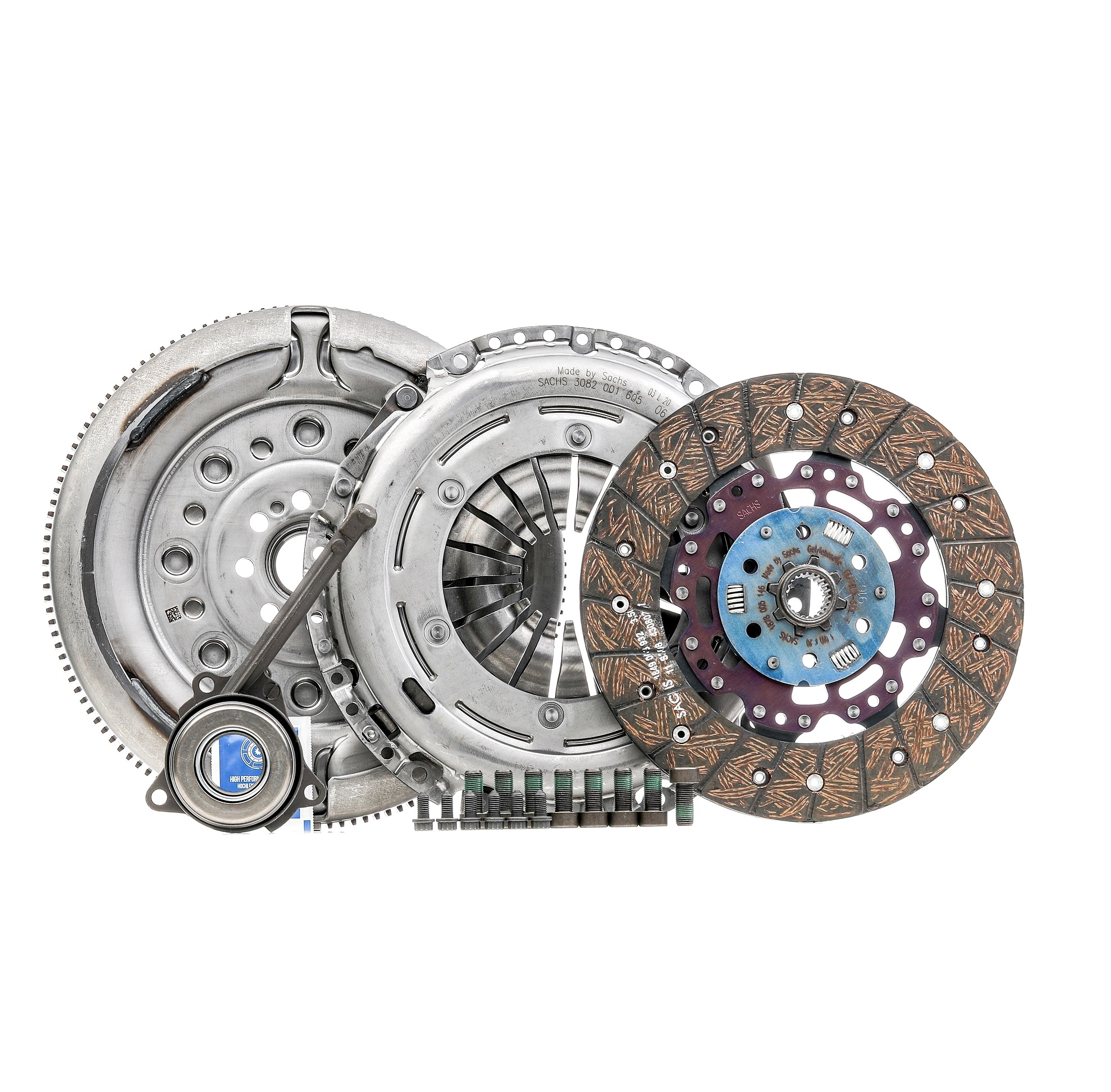Table of Contents
Heavy Clutch Pedal: Why Your Clutch is Stiff and How to Loosen It
Is your clutch pedal suddenly hard to press? If so, it's important to get to the bottom of what’s causing it as this could indicate that one of the clutch components is damaged or faulty. Read more to find out what causes a stiff clutch pedal and how to soften the clutch pedal.
What Does a Heavy Clutch Pedal Mean?

There are a number of possible reasons why your clutch pedal feels much harder to press than normal. The first possibility is that the pedal needs to be readjusted so that it engages and disengages at the right point. This is a relatively simple fix.
However, other potential causes include cold weather conditions, a lack of fluid due to blockages in the lines or leaks, and mechanical wear. For example, critical parts, such as the pressure plate, pivot ball, or clutch cable, can become worn or damaged, making it difficult to release and disengage the clutch. You should also check the release bearing, diaphragm spring, and hydraulic cylinders.
Sold by AUTODOC Sold by AUTODOC Sold by AUTODOC Sold by AUTODOC Sold by AUTODOC 

 SACHS Clutch kit
with central slave cylinder, with clutch pressure plate, with dual-mass flywheel, with flywheel screws, with pressure plate screws, with clutch disc, 240mm
SACHS Clutch kit
with central slave cylinder, with clutch pressure plate, with dual-mass flywheel, with flywheel screws, with pressure plate screws, with clutch disc, 240mm
 LuK Clutch kit
with clutch release bearing, with flywheel, with screw set
LuK Clutch kit
with clutch release bearing, with flywheel, with screw set
 LuK Clutch kit
with central slave cylinder, with flywheel, with screw set, with automatic adjustment
LuK Clutch kit
with central slave cylinder, with flywheel, with screw set, with automatic adjustment
Clutch Pedal is Hard to Press After New Clutch Installation
A stiff clutch pedal after new car clutch parts has been installed is often caused by issues with the cable or hydraulic system. For example, it could result from improper adjustment of the clutch cable, air in the hydraulic lines, corrosion, or wear.
Additionally, new components might need some time to break in. Carrying out a proper installation and adjustment, bleeding the hydraulic system, and checking for any obstructions can help resolve this issue.
Clutch Feels Heavy When Cold
The main reason the clutch pedal goes stiff when cold is typically due to thickened transmission fluid or lubricants that haven't warmed up properly, making the hydraulic clutch components slow to respond.
This issue can be exacerbated by old or contaminated transmission fluid. Ensuring the vehicle is properly warmed up and replacing the old fluid with one that has a good low-temperature performance can make it easier for the parts to move. Regular maintenance and checks can also prevent this.
Hard Clutch Pedal: Causes and Solution

The top causes of a stiff or heavy clutch include mechanical wear or failure, hydraulic issues, such as blocked lines and low fluid, corrosion, and misalignment. If you want to determine exactly what the root cause of the issue is, you can start by checking the parts listed below.
Damaged cross shaft
Also known as the clutch release shaft or fork shaft, it’s responsible for transferring the movement from the clutch pedal to the release bearing mechanism. In doing so, it disengages the clutch. When this component becomes worn or damaged, it becomes more difficult to disengage the clutch, potentially resulting in a stiff pedal.
Faulty pivot ball
This is the part connecting the pressure plate to the clutch release bearing. If it is defective or not well lubricated, the mechanism won’t engage or disengage properly, affecting the hardness of the pedal.
Pedal needs adjusting
It can occur due to the pedal and clutch mechanism being out of alignment. After years of use, the pedal can gradually move out of place, causing a change in the disengaging or biting point and therefore requiring more effort to push down the pedal.
Sold by AUTODOC Sold by AUTODOC Sold by AUTODOC Sold by AUTODOC Sold by AUTODOC  VALEO Clutch kit
with dual-mass flywheel, with flywheel screws, without lock screw set, with clutch release bearing, 235mm
VALEO Clutch kit
with dual-mass flywheel, with flywheel screws, without lock screw set, with clutch release bearing, 235mm
 SACHS Clutch kit
with clutch pressure plate, with dual-mass flywheel, with flywheel screws, with pressure plate screws, with clutch disc, with clutch release bearing, 228mm
SACHS Clutch kit
with clutch pressure plate, with dual-mass flywheel, with flywheel screws, with pressure plate screws, with clutch disc, with clutch release bearing, 228mm
 FANFARO Transmission fluid
75W-80, Capacity: 1l
FANFARO Transmission fluid
75W-80, Capacity: 1l


Loose clutch cable
The cable connecting the pedal to the linkage can become overstretched or loose, making it much more difficult to engage and disengage the system.
Faulty slave or master cylinder
Cylinder faults or failure will cause problems with the hydraulic pressure in the system, making the pedal too hard or easy to press down.
Low or contaminated fluid
The transmission fluid is necessary for ensuring that all of the moving parts keep moving smoothly and are protected against wear and corrosion. When the fluid is low or contaminated, the parts won’t be sufficiently lubricated, making them feel stiff.
Faulty pressure plate
If the plate’s friction material is worn down, the clutch pedal may be as spongy or hard as a rock, or get completely stuck.
How to Loosen a Stiff Clutch Pedal

First, you need to diagnose the fault before you can find the solution. Inspect the your clutch cable for wear and damage, as well as the clutch fluid levels. A stretched cable will need to be replaced and low clutch fluid levels could indicate a leak. Next, inspect the cross shaft and pivot ball for wear. If necessary, replace the components or lubricate the pivot points with a specialised high-temperature grease. Lastly, you’ll need to check the pressure plate, clutch disc, and pedal assembly itself.
Summary
A stiff clutch pedal is the result of improper cable adjustment, air in hydraulic lines, or excessive wear. Cold weather can cause the lubricant to thicken, worsening the issue. Common causes of a heavy clutch include mechanical wear, hydraulic issues, corrosion, misalignment, and fluid problems. Proper installation, maintenance, and fluid checks can help alleviate these issues.
FAQ:
Should the clutch pedal be hard or soft?
Ideally, the clutch pedal should feel neither hard nor soft (or spongey). Instead you should feel moderate resistance as you press it down. You should get the clutch and transmission checked if it feels abnormally soft or hard.
Can I drive with a stiff clutch?
While you may still be able to drive the vehicle, it isn’t advisable to do so for long periods. For starters, this will get very tiring for the driver, but there is also a possibility that you’ll do further damage to the clutch or lose control of the mechanism.
Can you fix a heavy clutch?
Yes, once you have determined what the cause is. It may be fixed by replacing worn and damaged parts of the mechanism, tightening loose parts, replacing broken seals, adding new transmission fluid, or removing air and contaminants from the hydraulic system.
Top products related to this topic:











